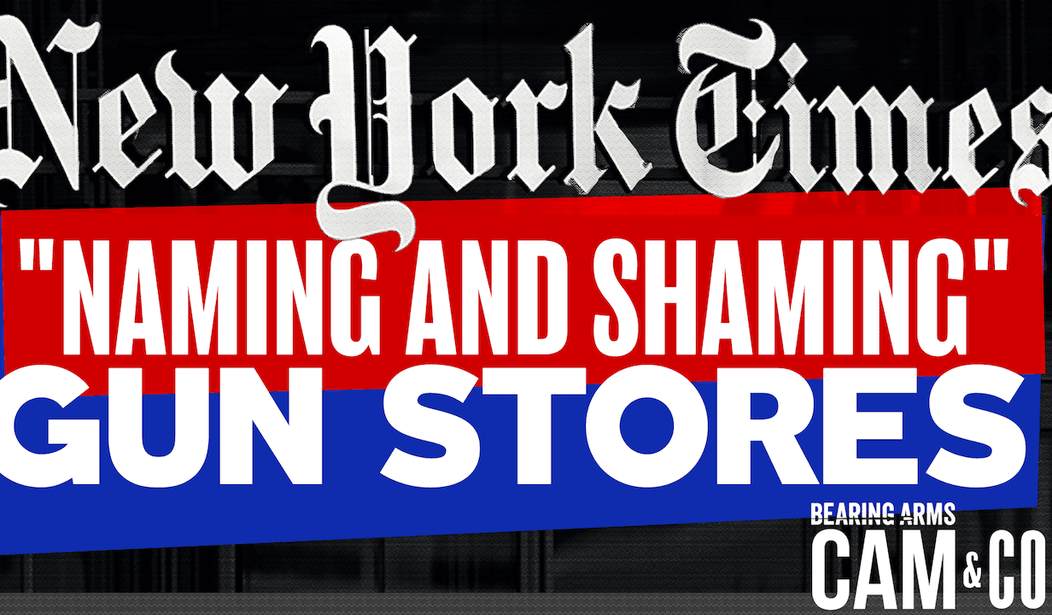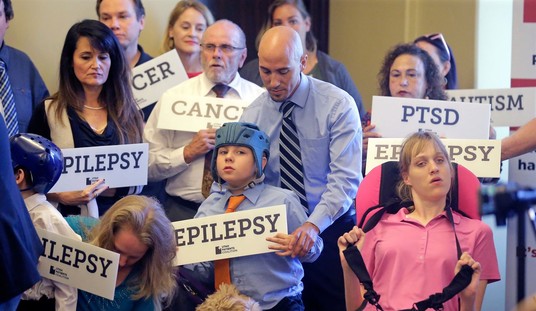The New York Times is out with a hit piece on “bad apple” gun dealers, uncritically promoting a new report by the gun control group Brady that claims a handful of gun stores in the Philadelphia area are arming a majority of the city’s criminals. On today’s Bearing Arms’ Cam & Co we’re taking a closer look at the claims of both Brady and the New York Times, as well as the paper’s dubious take on the gun control group’s data.
The premise of the Times’ story is simple: data shows that just six gun stores in the Philadelphia area sold a majority of the guns recovered and traced at crime scenes in the city between 2014 and 2020, which must mean that those stores have done something wrong.
Oddly, while that’s clearly the intent of the story, the Times reporters quote multiple sources, including a Brady spokesperson, who admit that ATF trace data alone isn’t enough to demonstrate wrongdoing on the part of any gun shop.
“There is a wide spectrum of behavior we’re dealing with when it comes to these stores,” T. Christian Heyne, Brady’s vice president for policy, said in an interview. “Some of them need support, some need more scrutiny, and some of them just need to be shut down.”
… A.T.F. officials have long argued against making any inferences from crime-gun data in isolation without knowing the percentage of a store’s overall guns end up in the wrong hands. But that information, along with many other details about individual store operations, is not made public.
… [Pennsylvania Attorney General Josh] Shapiro, echoing the A.T.F., cautioned against drawing too many conclusions about individual sellers, adding that “a small percentage” of bad sales at a busy, but otherwise legally compliant, store could show up as dozens of crime guns. He also emphasized that the information, while useful, was incomplete because many local departments did not contribute tracing information.
… Larry Keane, a top official with the National Shooting Sports Foundation, a firearms industry trade association, went even further, accusing gun control activists of trying to “name and shame” honest small-business owners and singling out Brady for compiling misleading lists of “bad-apple” dealers. He cited a 1998 report by the A.T.F., which described gun tracing as a “starting point” for investigators to unravel a defendant’s illegal behavior that “in no way suggests” the dealer’s culpability.
So, knowing that a small number of stores sold a large number of firearms that were traced isn’t evidence of any criminal behavior on the part of any firearms retailer, yet that’s the insinuation made throughout the NYTimes’ story. What’s more, the paper’s reporters fail to inform their readers that the vast majority of firearm traces conducted by the ATF in Pennsylvania were for things like “possession of a weapon,” “firearm under investigation,” and “found firearm,” and not for violent offenses. Instead, they leave the impression that every trace conducted must be evidence of some wrongdoing or criminal act on the part of the gun store that originally sold the firearm.
After laying down that foundation, the paper then engages in exactly the type of “name and shame” behavior called out by the NSSF’s Keane. They contacted (or tried to, anyway), two Philadelphia-area gun shops that (in the paper’s words) have “been named in weapons trafficking cases brought by prosecutors in nearby Montgomery County.” Been named, in this case, means the firearms traffickers who are accused of engaging in straw purchases bought their firearms from these establishments, not that the owners or any employees of the store were charged with any crimes themselves.
If there had been clear evidence that any gun store employee or owner had willfully taken part in these straw purchases, they would have been indicted right along with the straw purchasers. And even though the New York Times and its named sources all acknowledge that fact, the entire intent of the story is to leave readers with the false impression that something terribly wrong must be taking place at these stores, but a few more gun control laws and a lot more funding for the ATF can solve the problem.









Join the conversation as a VIP Member